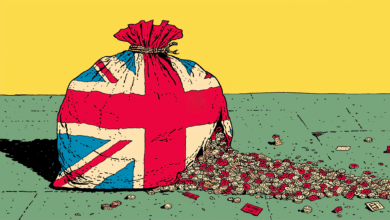Obamacare Was Never Affordable

The focus of the current government shutdown circus has increasingly narrowed to Democrat demands to undo proposed reductions in very large, supposedly temporary, Covid-era Obamacare (Affordable Care Act) subsidy boosts. A major part of their public push is the claim that they are trying to save citizens money, though what they are actually demanding is that we shift the burden to future generations via increased federal debt, backed by the threat of demonizing Republicans as heartless for taking away any benefits. They emphasize the need to maintain the “great deal” the ACA offered.
The problem with their emphasis was revealed by a recent Washington Post editorial that admitted that “The real problem is that the Affordable Care Act [Obamacare] was never actually affordable,” because “policies cost more than expected.” The Post cited the assumption that “risk pools would be bigger than they turned out to be” for the gap between the Act’s name and reality. However, the fact is that “higher than expected costs” were actually expected by ACA’s architects, but were intentionally misrepresented to make a sow’s ear look more like a silk purse to voters.
Most instructive on this score were comments made by MIT economist Jonathan Gruber, who helped assemble Obamacare, at the time.
Remember the proposed 40% tax on “Cadillac” company insurance coverage? Gruber admitted it was really a means to tax workers in a way that would lead them to blame employers rather than the ACA for expensive plans. Employers were legally responsible to pay the tax, but every economist knows who actually bears the burden. When employers know their costs will be higher as a result of the tax, employees are worth less net of the taxes paid, and workers would end up bearing the burden. In other words, it was a sneaky way to get workers to overlook the expenses they would actually bear, in a bid to increase political support by deception.
Gruber and other ACA builders also manipulated Congressional Budget Office methodology to misrepresent its cost to the public. The law’s design was tweaked to look as good as possible in the CBO’s eyes, not in reality. This was why the ACA imposed mandates. As Gruber stated, “The bill was written in a tortured way to make sure the CBO did not score the mandate as taxes. If the CBO scored the mandate as taxes, the bill dies. OK, so it’s written to do that,” to take advantage of “the stupidity of the American voter.”
That led to perhaps the most unique twist on ACA’s path to implementation. It required what are really taxes to go uncounted by the CBO, because they were treated as penalties rather than taxes. But the only reason the ACA was found Constitutional was that Justice Roberts decided that what promoters called a penalty was really a tax, not a penalty, and Congress could impose taxes. The deception was necessary to pass Obamacare, but the Supreme Court’s recognition of the deception was the only reason it was upheld.
The manipulation of CBO methodology also extended to the timing of Obamacare’s implementation. CBO rules specify that one must only project ten years when estimating a program costs. That meant that “counting the cost” extended only until 2019. But Obamacare cost almost nothing until 2013, and its slow implementation enabled the ensuing six years of costs as if they represented a full decade. That is how a ten-year CBO cost estimate of $848 billion became $2 trillion, when the CBO revisited it four years later.
Gruber also admitted that Obamacare’s regulations, promoted as a way to “limit premium variation based on age,” were actually a means to force insurance companies to underprice insurance to older Americans (who are far more likely to vote), who are known to be less healthy and therefore more costly to insure, and overprice plans for lower risk younger people (who are far less likely to vote). But as Gruber confessed, if rather than using a disguised way of imposing what amount to insurance rate ceilings for the old and floors for the young, “if you had a law which said that healthy people are going to pay in—you made explicit that healthy people pay in and sick people get money—it would not have passed.”
Gruber also admitted that promises that ACA would bring rapidly rising medical costs under control were fantasy, making its supposed lower cost estimates into the future hot air rather than hard evidence—“all you ever hear people talk about is cost control. How it’s going to lower the cost of health care,” but “we don’t know how.” Rather, “a politically feasible way right now to bend the cost curve… just doesn’t exist.”
The case for Obamacare was, from the beginning, a compound of lies, and statistics, which together transformed a bad idea into a seemingly good one for Democrat politicians. Since then, supposedly temporary Covid subsidies have only doubled down on those distortions. That crisis is long gone as an even plausible excuse. Yet maintaining both the original ACA and its “emergency” subsidy expansion is what Democrats are insisting on as their price to reopen the federal government. Some may think that makes political sense now, but when you dig into ACA’s contortions and misrepresentations, it is hard to see how that would provide Americans with benefits worth fighting for.
The post Obamacare Was Never Affordable was first published by the Foundation for Economic Education, and is republished here with permission. Please support their efforts.



